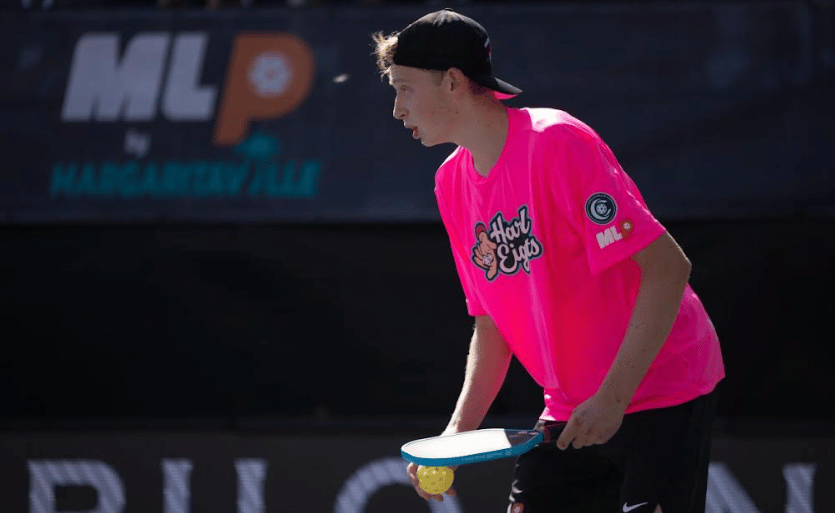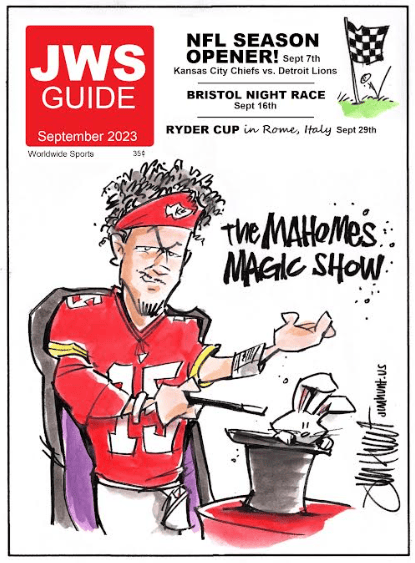- JohnWallStreet
- Posts
- Pro Pickleball Leagues Merge, Sized to Reach $100 Million in Revenue in 3-4 Years
Pro Pickleball Leagues Merge, Sized to Reach $100 Million in Revenue in 3-4 Years
Pro Pickleball Leagues Merge, Sized to Reach $100 Million in Revenue in 3-4 Years

Major League Pickleball (MLP) and the PPA Tour recently announced they would be coming together to unify professional pickleball under a NewCo. The combined entity will be capitalized with a new $50 million investment.
Jason Stein’s SC Holdings and D.C. Pickleball Team owner Al Tylis (he also co-owns Club Necaxa) are leading the round. PPA Tour owner Tom Dundon is also expected to participate.
The rival leagues believe they can do a better job growing the sport, and make the revenue pie bigger, by working together rather than apart.
“This will be a multi-billion-dollar property. These teams will be worth tens of millions of dollars,” one NewCo insider said. “There’s just so much [revenue] to go around. Why fight with each other and drive-up costs on [one another]?”
There will be just a single professional pickleball circuit moving forward.
The investment was sized for the combined business to reach $100 million in revenue, and break-even, in 3-4 years. That projection excludes any media rights revenues that may be generated.
SPONSORED BY VISION INSIGHTS
If you caught any NBA Playoff action this past season, there’s no doubt you saw a FanDuel inclusion or two. Just how valuable are those broadcast inclusions and television-visible signage, you wonder? With new measurements from Vision Insights it turns out the impact is strong—nearly $17.6 million in total value, in fact.

Vision’s Decoder platform is tracking and measuring brand exposure and impact like never before by looking at media exposure, signage asset performance, fan recall, and more. Check out FanDuel’s complete Playoff analysis here and learn more about the Decoder platform by connecting with Vision Insights.

The investment thesis for professional pickleball starts with the sport’s increasing participation. The Sports & Fitness Industry Association estimated that 8.9 million people over the age of 6 played the game in 2022 (+159% over 2019).
Pickleball advocates are convinced that figure will rise to north of 50 million Americans within a half-decade, and that a meaningful number of those individuals will want to consume the professional game as fans. There is believed to be a high correlation globally between the sports people play and watch on television.
Pickleball will be “one of the top five or six most watched sports in the country within the next 5-10 years,” the insider said.
How fans will consume the sport remains TBD. The NewCo has not yet settled on a long-term media rights strategy. ESPN and Amazon have both expressed interest in its rights. The sport also currently airs on YouTube and Tennis Channel.
Regardless of the platform, broadcast presentation and roster quality will improve in the years ahead. And the abundance of celebrity and athlete team owners associated with MLP will ensure the league remains in the public consciousness.
The PPA Tour was founded at the end of 2018. Dundon bought a majority interest in the league in January 2022. Like the ATP Tour, the PPA Tour emphasizes individual achievements and rankings.
Kuhn launched Major League Pickleball in 2021. He wanted to structure the league in a way that would be familiar to U.S. sports fans. He also believed establishing home markets was essential to creating true fandom.
While they maintained different formats, the two have been competing with one another since (think: for incremental fans, eyeballs, and sponsors).
MLP never set out to force a merger. However, a ‘non-compete’ of sorts became necessary once the PPA began talking about launching its own team-based league.
The two properties agreed on a strategic partnership in late ’22. The PPA was going to take an ownership stake in MLP and agreed it would not create a competing team-based league. The two entities would remain independent and share some overlapping partners.
But MLP ultimately chose to pass on that arrangement, and instead began trying to lock up the sport’s top players to long-term contracts (necessary for it to expand its event calendar). Up until that point, most players participated in both leagues playing on half or full-season long deals.
Naturally, that move started a bidding war for talent –and spurred mistrust– between the leagues.
It’s hard to say who was winning the competition. While MLP attracted more players, the PPA Tour was able to retain the number one ranked male (Ben Johns) and female (Anna Leigh Waters) players.
But costs for both leagues skyrocketed. MLP and the PPA Tour have been paying players more than 100% of revenues earned. For context, the big four leagues roughly split revenues with their players.
Top pickleball players have been commanding seven figure contracts.
It became obvious that the competition between was not sustainable. Costs aside, there was an apparent need to bring clarity to the sport (think: for fans, sponsors, and media partners).
So, a collective of MLP stakeholders re-approached Dundon with the hopes of taking a fresh look at what a true partnership could look like. Two weeks later, a merger between MLP and the PPA Tour was done.
At least in principle. There are still details that need to be worked out before it closes as each league owns multiple business.
In fact, there were some folks on the PPA side who opposed a merger because its other businesses are capable of helping to underwrite the league on a cash-flow basis.
It’s worth noting that some of those businesses (think: Pickleball Central), and some of MLP’s ancillary businesses (think: DUPR), are excluded from this deal; though avenues do exist for overlap, partnership, and even future combination.
The MLP side wasn’t unified in its decision to merge either. Some folks maintained that the league has a better product and should continue to go at it alone.
Rationale ending up winning out.
Assuming the deal goes through, the players will also be among the winners. They’ll be getting paid more and have longer term security than under the previous set-up (3-year contracts).
Existing MLP and PPA shareholders should also come out ahead. In addition to any cost synergies enjoyed, by consolidating the pro game the NewCo can extract maximum value from its rights and IP.
It’s worth noting that the current fundraising environment was not a catalyst for the merger. Multiple investors were said to be prepared to pay eight figures for an expansion franchise.
The NewCo is not expected to be profitable immediately, which is why the business is getting an injection of operating capital. It will likely lose tens of millions of dollars over the next few years. Player salaries remain the largest expense.
However, the expectation is the league will be cash-flow positive in 3-4 years, without any additional investment.
The hope is individual teams can reach profitability even quicker.
The bulk of the projected nine figure revenue total is expected to come from sponsorships. The sport’s wide demographics and growing participation levels are attractive to endemic and non-endemic brand partners. MLP’s current partners include State Farm, Prius, and Margaritaville.
$100 million/year seems like a large number based on current deal sizes. But the sport is growing rapidly. Those investing in it believe revenues will quickly follow.


Top 5 Sports Business Headlines
Click here to subscribe to Sport & Story Daily and never miss a story.
⛳ PGA of America taps Omaha Productions for new marketing vision
📺 Monumental Sports rebrands NBC RSN In Washington, D.C.
🖱 TSM departs LCS after selling team slot to Shopify Rebellion
📢 Durant launches Boardroom advisory firm
🤼 Fanatics claims WWE rights, ousting Panini

